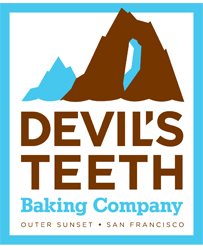by Ed Moy
The SF Planning Commission voted unanimously on Dec. 8 to approve plans for the installation of new AT&T cell phone antennae on the roof of the Bureau of Jewish Education (BJE), located at 639 14th Ave.
According to David Waksberg, the CEO at BJE, the Bureau has had a cellular antenna on the roof of its building for the past 14 years. To earn extra income, the Bureau wants to install new antennae on the roof in fake chimneys.
However, parents, faculty and administrators at the Lisa Kampner Hebrew Academy, located next door to BJE, have protested the proposed project, claiming the antennae will emit dangerous levels of radiation, which could compromise the health of the school’s students. About 80 people concerned about the project met in October.
Representatives from the school say they did not know there was a cell antenna on the roof next door, but object nevertheless to the proposed intensification of the project that the new antennae would bring.
“Last spring, when we were in negotiation with AT&T, all neighbors in close proximity were invited to an informational session. Only a handful showed up,” Waksberg said. “As we have had a cell antenna on our building for 14 years, we never imagined this would be a controversial move.
“When it came to our attention that the project provoked concerns among parents at the neighboring Hebrew Academy, we requested that AT&T revise its original plan, removing two antennas that were planned to be closer to the school and facing the school,” Waksberg explained. “As a result, the remaining antennas are at the far corner of our building (away from the school), facing east and north (not south toward the school). In essence, the new antennas are at the same location of our existing antennas (at the northeast corner of our building).”
Waksberg said an engineering firm that conducted tests to determine the level of radiation emitted from the new antennae determined that radiation outside the school at the point nearest the antennae would be at a level 20,000 times below the FCC standard.
Nevertheless, during public testimony at the Planning Commission hearing, several Hebrew Academy staff members and parents made pleas to reject the project because of potentially harmful affects on children from antennae radiation.
Waksberg told the commission: “We have no intention of harming the school. We have, with AT&T’s support, significantly changed our proposal in a way that we believe is not going to harm anyone at the school, and is supporting of the view that there is really no radiation going to be beamed toward the school.”
With the plan’s approval, those opposed to the project have 30 days to file an appeal with the SF Board of Permit Appeals and/or the SF Board of Supervisors to overturn the Planning Commission’s decision.
According to Lane Kasselman, spokesperson for AT&T, the project could be completed as soon as April or May of 2012, pending the approval of the building permit some 30 – 45 days after the end of the appeal process.
“Each Planning Commission meeting reviews and approves multiple requests for cell antennae construction,” Waksberg said. “These antennae are all around us and each person who claims to be concerned about the project uses a cell phone (which emits much more radiation to the user than the radiation they would receive from the antennae). No credible evidence has shown any health or safety risks.”
Doug Loranger, organizer of the San Francisco Neighborhood Antenna-Free Union (SNAFU), a grass-roots citywide coalition that focuses on the impacts of wireless facilities, stated he opposes the project, and that the school and nearby residents’ best recourse now is to appeal the installation to the Board of Supervisors on “land use” grounds, rather than potential health impact grounds.
Loranger said the World Health Organization has classified the kind of radiation the AT&T antennae emit as “Class 2B,” a possible human carcinogen. He also pointed out that since 2001, a total of 14 such “Conditional Use” appeals of wireless facilities have been decided by the Board of Supervisors in favor of residents and against various wireless carriers.
“Unfortunately, getting AT&T to voluntarily respect residents’ concerns about wireless facilities at sensitive locations and withdraw from these sites has about as much chance for success in San Francisco as convincing them to change the name of AT&T Park to Willie Mays’ Field,” Loranger stated.





















